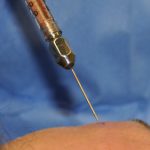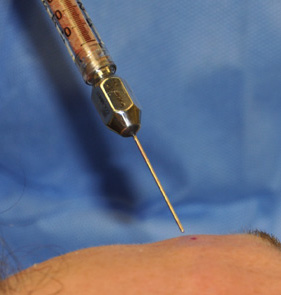Migraines headaches affect a significant percent of the population for which there is no one single effective treatment. One advance in the the treatment of migraines has been the discovery of peripheral compression points at sensory nerve exits of the skull and the refinement in the techniques for their surgical decompression. In the properly selected patient such migraine surgery has a high success rate.

In the March 2019 issue of the journal Plastic and Reconstructive Surgery an article was published in that regard entitled ‘Therapeutic Role of Fat Injection in the Treatment of Recalcitrant Migraine Headaches’. In this paper the authors studied twenty-nine (29) patients who had persistent migraines after decompression surgery. They were treated by small aliquot fat injections (10 to 30ccs) around each nerve identified as the migraine trigger. A specific set of migraine assessment criteria were used to assess the results.
Twelve (40%) of the patients experienced a complete resolution of all migraine headaches. Twenty of the patients (about 70%) experienced at least 50% improvement in their migraine frequency and severity. Five patients showed less than 50% improvement in their symptoms while four patients (13%) developed worsening symptoms. No complications occurred.
This novel study supports that fat injections in the recalcitrant migraine headache patient is both safe and effective for many such patients. It offers therapeutic improvement that appears to be superior to more conventional treatments such as nerve stimulators. It can be repeated if necessary and there appears to be no downside to doing so.
Dr. Barry Eppley
Indianapolis, Indiana



